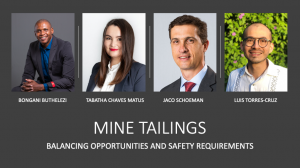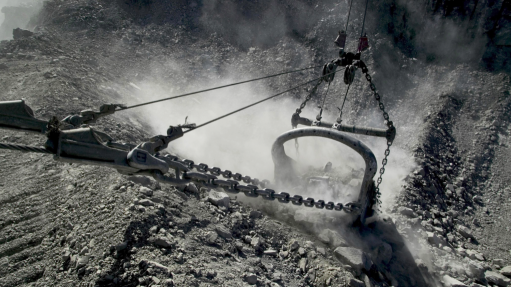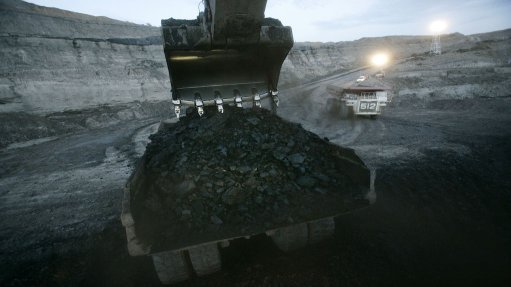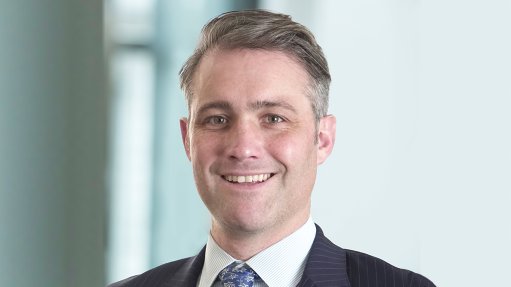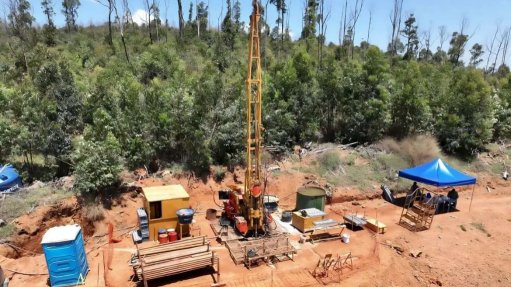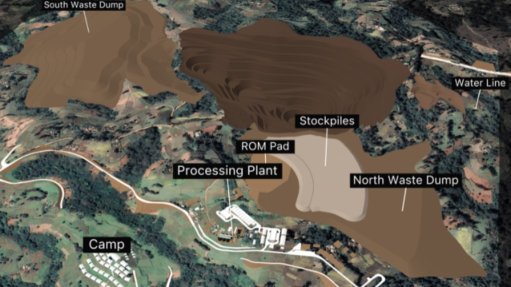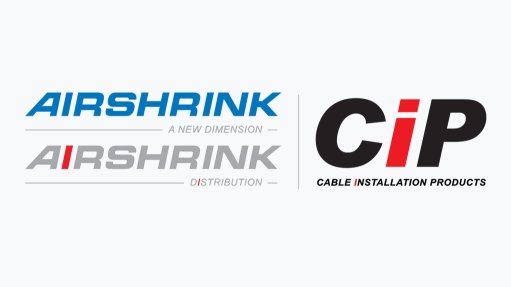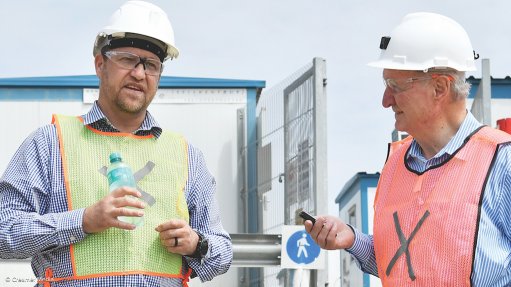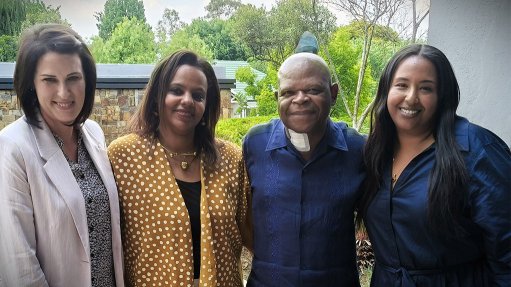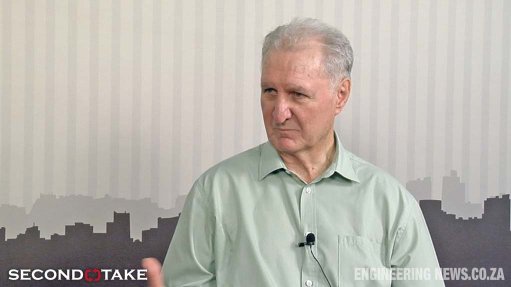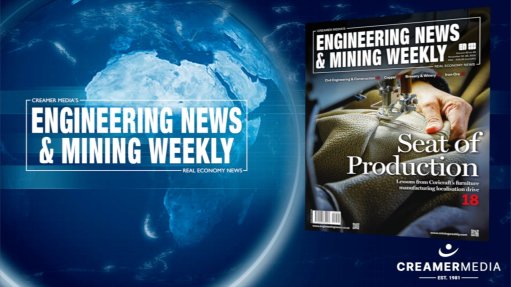Collaboration has ensured an improved record for tailings facility safety, panel finds

Collaboration has ensured an improved record for tailings facility safety, panel finds
With the volume of tailings deposits globally increasing at a faster rate than it did in the last century, it has become prudent for mining companies to ensure minimal risks to surrounding environments and communities, including through constant collaborative innovation and meaningful community engagement.
This was the conclusion of a webinar hosted by Creamer Media on February 24, in which tailings miner DRDGold COO Jaco Schoeman, mining services provider Fraser Alexander COO for mineral processing Bongani Buthelezi and University of the Witwatersrand School of Civil and Environmental Engineering senior lecturer Dr Luis Torres-Cruz all agreed that such collaboration had become a more regular feature in the mining industry, particularly with mounting pressure for the industry to do zero harm from an environmental as well as a social point of view.
In response to International Council on Mining and Metals (ICMM) tailings lead Tabatha Chavez Matus, the panel moderator, asking what some of the main tailings-related concerns were in the mining industry at the moment, Torres-Cruz stated that, at current mining and tailings deposition rates, the mining industry would, in a five-year period, accumulate 25% of the tailings volumes generated over the prior 100-year period.
He added that although instances of tailings dam failure had increased in recent years, which was worrying, the way in which mining companies were adopting best practice guidelines and collaborating with a broader range of stakeholders had been encouraging.
As background to the discussion, Matus pointed out that miners globally had been focused on making their tailings facilities safer, particularly since the Brumadinho tailings dam collapse that occurred in 2019.
ICMM suggests tailings management best practice through 77 requirements that its members have to adhere to, which form part of the Global Industry Standard on Tailings Management.
Schoeman illustrated how DRDGold, which sponsored the webinar, had been reclaiming and unlocking valuable land that would have otherwise been dormant and posed environmental and social risks.
In conducting its share of meaningful community engagement, DRDGold has learned what communities need to achieve true empowerment and sustainability. For example, the company’s Broad-Based Livelihoods (BBL) programme has enabled thousands of entrepreneurs to build self-sufficient businesses, particularly in the agricultural space.
Schoeman said that, by focusing on the sustainability and safety of surrounding communities, the company had improved its own sustainability trajectory.
In turn, Buthelezi pointed out that Fraser Alexander particularly sought ways to add value to projects that come to the end of their lives. The company was in the process of formalising an environmental, social and governance system across the business.
Buthelezi highlighted that Fraser Alexander refrained from working with clients or partners that were not aligned with global best practice tailings management.
“Nowadays, it is no longer about doing business, extracting profits and moving on. Communities have become important stakeholders. Fraser Alexander has multiple programmes in place to uplift communities, over and above our clients’ programmes for community upliftment.
“We often take on programmes to address certain issues in communities that our clients are not even aware of,” Buthelezi pointed out, adding that Fraser Alexander often took on businesses to ‘coach’ community members into becoming more sustainable and profitable.
Fraser Alexander has a database, which it created 30 years ago, that is regularly updated with how these assisted businesses are doing.
Torres-Cruz pointed out that collaboration between mining companies and academia was more vibrant than ever, and he believed the Brumadinho dam collapse to have been a watershed moment for the mining industry. “The reality of tailings risks sunk in for a wider audience during that time, not just the specialists,” he noted.
Torres-Cruz said the tragedy sparked a greater sense of urgency for tailings storage facilities (TSFs) to be managed in a better and safer way, whether through collaboration with peers, academia or suppliers.
In turn, he pointed out that the interaction between academia and mining companies helped researchers to come up with better, more targeted research questions based on what happened in the field, and therefore more actionable insights could be generated.
Academia had also historically struggled to get funding to pursue and develop research ideas; however, mining companies had become more eager to support these efforts. Researchers also had increasingly better access to mine sites to gather information, which was previously quite challenging.
Torres-Cruz said collaboration between mining companies and other stakeholders had made operations more transparent and accessible, and therefore safer, as people could be held accountable by more than one party.
Torres-Cruz explained that mining companies were also visiting classrooms and talking to students more often, in a knowledge-sharing exercise, which provided another level of value to their education, and awareness about safety in the industry.
Schoeman pointed out that a main challenge with meaningful community engagement, was defining the parameters of the community – is it within a 1 km radius around a mine, or within 3 km perhaps?
What DRDGold did to make community engagement simpler was set up forums with members that represented the communities, having been elected by community members. These forums typically discuss potential expansion projects, small business involvement and environmental impacts such as dust fallout.
In these forums DRDGold also discussed the risks to community members’ health and safety should they trespass on a tailings deposition or reclamation site.
One forum, for example, had gathered community members to help monitor trespassing from beyond the operations’ fence, while the DRDGold security team monitored from within the fence.
“There will always be people that think we do not do enough for our communities, but we can only try our best to engage meaningfully and impact positively on our surrounding communities,” Schoeman stated.
ULTIMATE REQUIREMENTS
Responding to what would ultimately made tailings reclamation and deposition safer, Torres-Cruz said monitoring adherence to good construction practices, was a starting point. He said that, too often, TSFs do not have solid foundations, for example, owing to bad construction.
He also suggested that more partnerships and stronger communication was needed going forward between academia, mining companies and other stakeholders in the industry.
Responding to the same question, Buthelezi said there was no one technology that could ensure safety throughout the lifespan of a TSF. Instead, it was vital to continuously respond to risks as they arose. “If we have technology reporting back on an hourly basis, or doing minute-by-minute monitoring, we can better ensure the safe operation of a facility throughout its lifetime.”
Buthelezi added that the mining industry as a whole needed to aspire to have technologies that reduced carbon footprints, without affecting jobs.
Schoeman agreed, stating that there was a lot of instrumentation being used on TSFs, many of which provide live data, including about the weather and return water. DRDGold, for one, used drones with infrared imagery, as well as satellite imagery, to monitor movement of tailings dams and ‘cold spots’ where water was coming to the surface.
He stressed that it was never any one event that caused a tailings catastrophe, but rather a number of smaller events that did not get attention and which built up to a major event that was easily triggered by a rainstorm or an earthquake.
Buthelezi said new standards such as the Global Industry Standard on Tailings Management would certainly continue to strengthen safety practices in the mining industry, particularly as it integrated social and economic considerations.
He believed the industry has come a long way in achieving zero harm to the environment and to people, but said there was certainly more work that needed to be done.
Schoeman said stakeholder engagement could help refine how companies manage TSFs, especially as there were many debates on the technical geophysical side of the operation, as well as the organisational side.
Torres-Cruz agreed, explaining that the sheer amount of expertise required to safely manage a TSF was immense, from how communities were affected to environmental issues.
However, TSFs also open up opportunities for people from different spheres of expertise to work together. He hoped the industry and academia, as well as communities, would continue feeding off each other’s strengths to build safer TSFs.
Article Enquiry
Email Article
Save Article
Feedback
To advertise email advertising@creamermedia.co.za or click here
Press Office
Announcements
What's On
Subscribe to improve your user experience...
Option 1 (equivalent of R125 a month):
Receive a weekly copy of Creamer Media's Engineering News & Mining Weekly magazine
(print copy for those in South Africa and e-magazine for those outside of South Africa)
Receive daily email newsletters
Access to full search results
Access archive of magazine back copies
Access to Projects in Progress
Access to ONE Research Report of your choice in PDF format
Option 2 (equivalent of R375 a month):
All benefits from Option 1
PLUS
Access to Creamer Media's Research Channel Africa for ALL Research Reports, in PDF format, on various industrial and mining sectors
including Electricity; Water; Energy Transition; Hydrogen; Roads, Rail and Ports; Coal; Gold; Platinum; Battery Metals; etc.
Already a subscriber?
Forgotten your password?
Receive weekly copy of Creamer Media's Engineering News & Mining Weekly magazine (print copy for those in South Africa and e-magazine for those outside of South Africa)
➕
Recieve daily email newsletters
➕
Access to full search results
➕
Access archive of magazine back copies
➕
Access to Projects in Progress
➕
Access to ONE Research Report of your choice in PDF format
RESEARCH CHANNEL AFRICA
R4500 (equivalent of R375 a month)
SUBSCRIBEAll benefits from Option 1
➕
Access to Creamer Media's Research Channel Africa for ALL Research Reports on various industrial and mining sectors, in PDF format, including on:
Electricity
➕
Water
➕
Energy Transition
➕
Hydrogen
➕
Roads, Rail and Ports
➕
Coal
➕
Gold
➕
Platinum
➕
Battery Metals
➕
etc.
Receive all benefits from Option 1 or Option 2 delivered to numerous people at your company
➕
Multiple User names and Passwords for simultaneous log-ins
➕
Intranet integration access to all in your organisation


